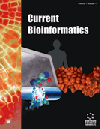
Full text loading...
We use cookies to track usage and preferences.I Understand
Peptidomics is the study of total peptides that describe the functions, structures, and interactions of peptides within living organisms. It comprises bioactive peptides derived naturally or synthetically designed that exhibit various therapeutic properties against microbial infections, cancer progression, inflammation, etc. With the current state of the art, Bioinformatics tools and techniques help analyse large peptidomics data and predict peptide structure and functions. It also aids in designing peptides with enhanced stability and efficacy. Peptidomics studies are gaining importance in therapeutics as they offer increased target specificity with the least side effects. The molecular size and flexibility of peptides make them a potential drug candidate for designing protein-protein interaction inhibitors. These features increased their drug potency with the considerable increase in the number of peptide drugs available in the market for various health commodities. The present review extensively analyses the peptidomics field, focusing on different bioactive peptides and therapeutics, such as anticancer peptide drugs. Further, the review provides comprehensive information on in silico tools available for peptide research. The importance of personalised peptide medicines in disease therapy is discussed along with the case study. Further, the major limitations of peptide drugs and the different strategies to overcome those limitations are reviewed.

Article metrics loading...

Full text loading...
References


Data & Media loading...

